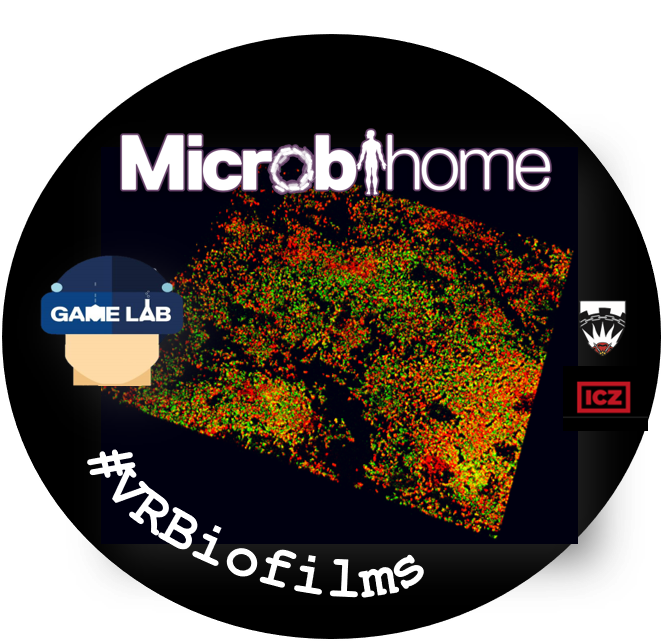Building the dream:
I have always wanted to create a virtual microbial world; a window into the secret life of microbes that usually, only us microbiologists get to see.
I am interested in how bacteria grow and survive in the body. Most bacteria grow as “biofilms”. They secrete sugars called “exopolysaccharides” that form a well organised matrix, which protects the bacteria from stresses, like antibiotics or immune cells. So in my research, I am trying to understand how bacterial biofilms respond to antibiotics during chronic infections. The more we understand about these environments, the better treatments we can develop. So what better way to explore a biofilm than to dive right in to one?!
In my lectures, I make edible biofilms with jelly and sweets. Then I run a good old-fashioned eating competition. Students pretend to be immune cells that must gobble up the biofilm infection. The students that get the sweets that aren’t encased in jelly (no biofilm) always clear the infection more quickly.
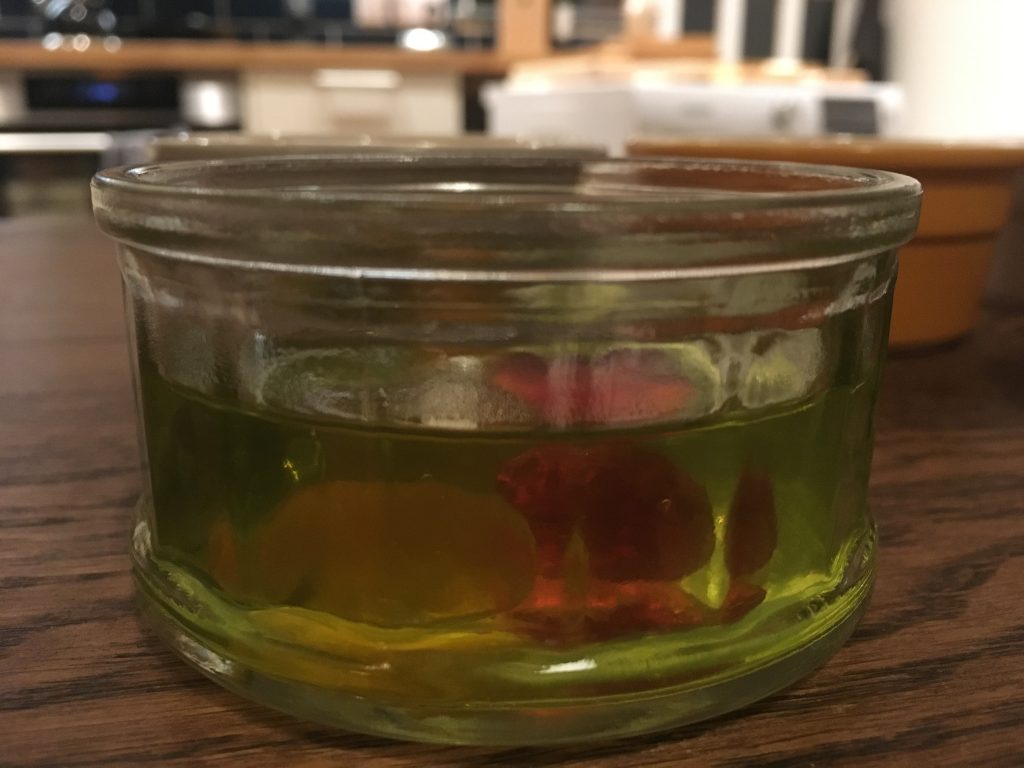
I wanted to develop something that wouldn’t rot your teeth! Our virtual reality (VR) biofilm development started with conversations at Manchester Science festival in 2017. “Could we actually build a virtual biofilm?”. The idea started to grow legs when digital technician and science communication student, Damon Reid, interviewed me for one of his assignments. We discussed plans for an interactive VR game that would be based on “a real live biofilm experiment”.
Then the magic happened.
I was at the annual Microbiology Society conference in Birmingham, where I bumped in to Prof Rich Lamont. I was a postdoc in his lab 13 years ago. We got chatting about live imaging of biofilms and I told him about our dream to create a virtual reality biofilm game. We talked about the potential of VR in engaging with different people about biofilms and how antibiotic resistance develops. Rich is a world-leading expert on polymicrobial biofilms and oral health, so he invited me over to his lab in Louisville, Kentucky to try out some ideas with his equipment. I was thrilled when the University of Salford agreed to cover travel expenses.
That same month, I discussed our plans with Prof Andy Miah (chair in science communication and digital media). He put me in touch with Dr Allen Fairchild, from our Industrial Collaboration Zone, Digital and Creative Team, because he could work out how best to turn our data into an interactive VR interface.
Gathering and translating experimental data:
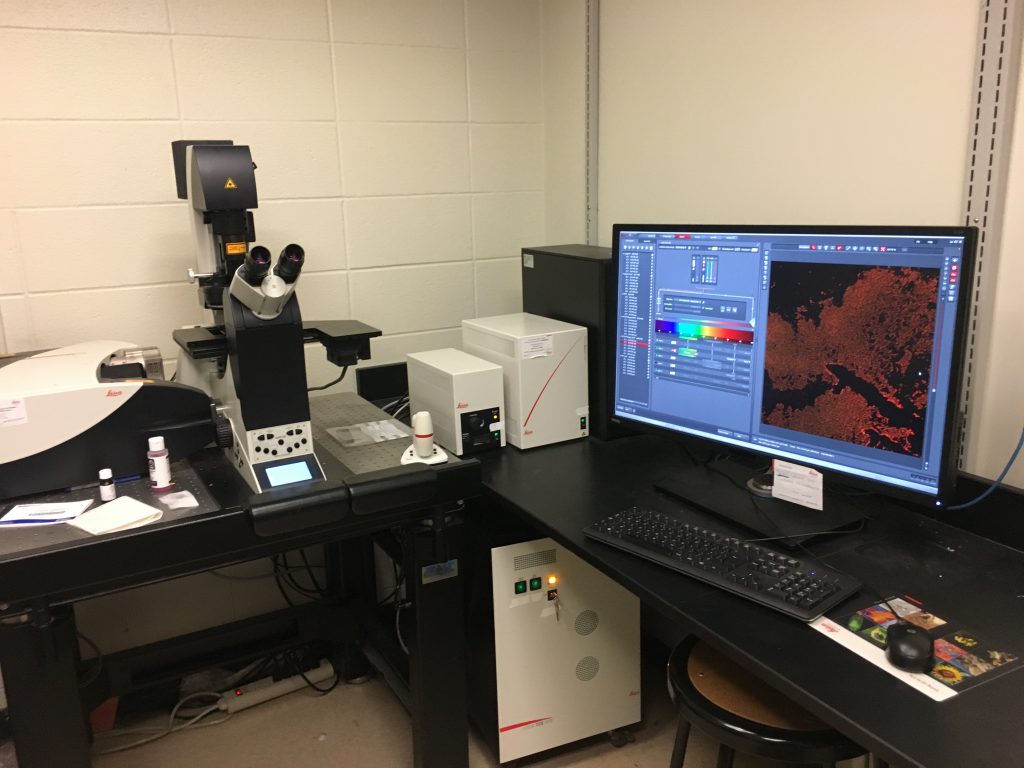

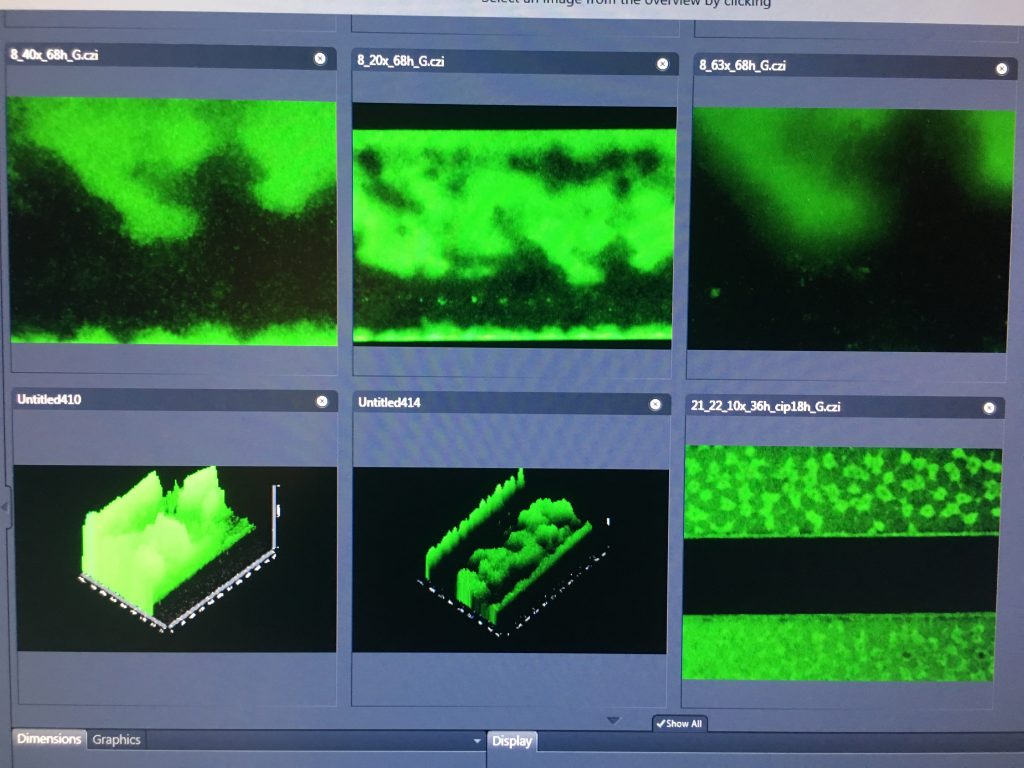
I spent two brilliant weeks in Rich’s lab, trialing different biofilm imaging techniques. The lab group were really friendly and provided a lot of support during my visit. I was able to build mature biofilm structures under flow and capture their responses using both fluorescent and confocal microscopy. I sent the images back to the computer science and creative team in Salford, who built a prototype VR environment. Once I got back home, we met together because we needed to tweak ideas and develop story lines. Each pixel from my biofilm images appeared as a block. This gave the appearance of a microbial Minecraft world. We thought this would be a great way to engage with young people! Damon and I worked up a narrative, which he layered on with just days to go before showtime at Manchester Science Festival (2018).
Showtime:
Science festival visitors of all ages have really enjoyed the VR-Biofilm experience and think it is a great educational tool. We have had a busy year! So far, we have taken VR-Biofilms to:
- Manchester Science Festival (Oct, 2018)
- Cheltenam Science Festival (June, 2019)
- Immerse at Salford Festival of Research (July, 2019)
- BlueDot (July, 2019)
- SIM Platform Investigator event: “Blood and Bodies” at Manchester Science and Industry Museum (Oct, 2019)
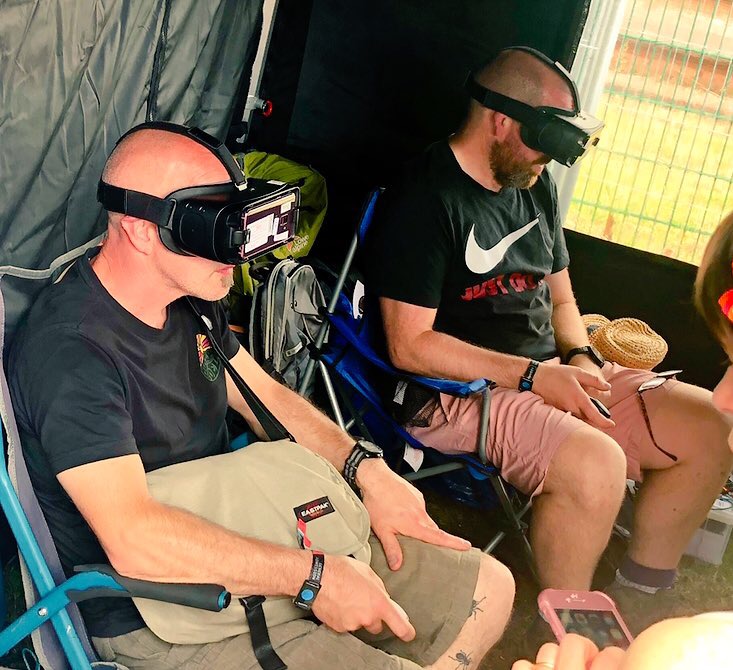
Feedback:
- “This should replace text books”. Parent (Manchester Science Festival).
- “That was great revision. I’ve got a test on Monday”. 6th form student (Cheltenham Science Festival).
- “That was really fun. I learned that you have to take antibiotics properly”. Junior school pupil (BlueDot).
- “It was fun. I think there should be quiz questions as you go along”. Senior school pupil (BlueDot).
- “That was Awesome!”. Junior school pupil (Science and Industry Museum).
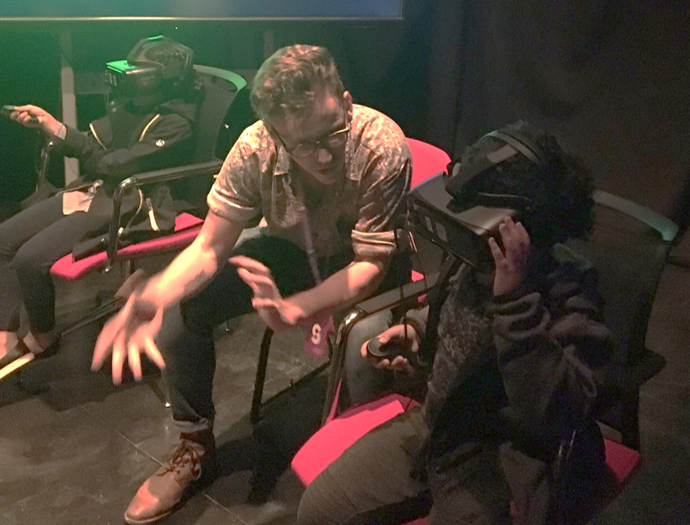


The team:
I had great experiences working with this team. Our success resulted from the good will and dedication of all. This is because we shared a passion towards a common goal. Next we are keen to work with users to co-create a smoother and more interactive version.
- Dr Chloe James (Snr Lecturer in Microbiology, University of Salford).
- Dr Ian Goodhead (Lecturer in Infectious Disease, University of Salford).
- Mr Damon Reid (MSc student in Science Communication and Digital Technician at Media City, University of Salford).
- Prof Richard Lamont (Delta Dental Endowed Chair, Oral Immunology and Infectious Diseases – University of Louisville, KY).
- Prof Andy Miah (Chair of Science Communication and Future Media, University of Salford).
- Dr Allen Fairchild (Industrial Collaboration Zone Team, Digital and Creative – University of Salford.
- Mr Erik LeGood (MSc student in computer science, University of Salford).
- Supported by an excellent team of trained postgraduate volunteers (Stuart Robertson, Jacob Parkes, Grace Plahe, Zuzanna Podwinska).
We would like to thank Andrew Ridley (Labtech), Dr Jo Fothergill and Dr Simon Abrams (University of Liverpool), who supported early experimental development.
Comments Off on Organic Collaboration Building: From dream to VIRTUAL reality